Embark on a culinary adventure with these 12 exotic dishes from around the world. Each dish offers a unique taste experience, reflecting the diverse cultures and traditions from which they originate. Whether you’re a seasoned traveler or an adventurous eater, these dishes promise to tantalize your taste buds and broaden your gastronomic horizons.
1. Balut
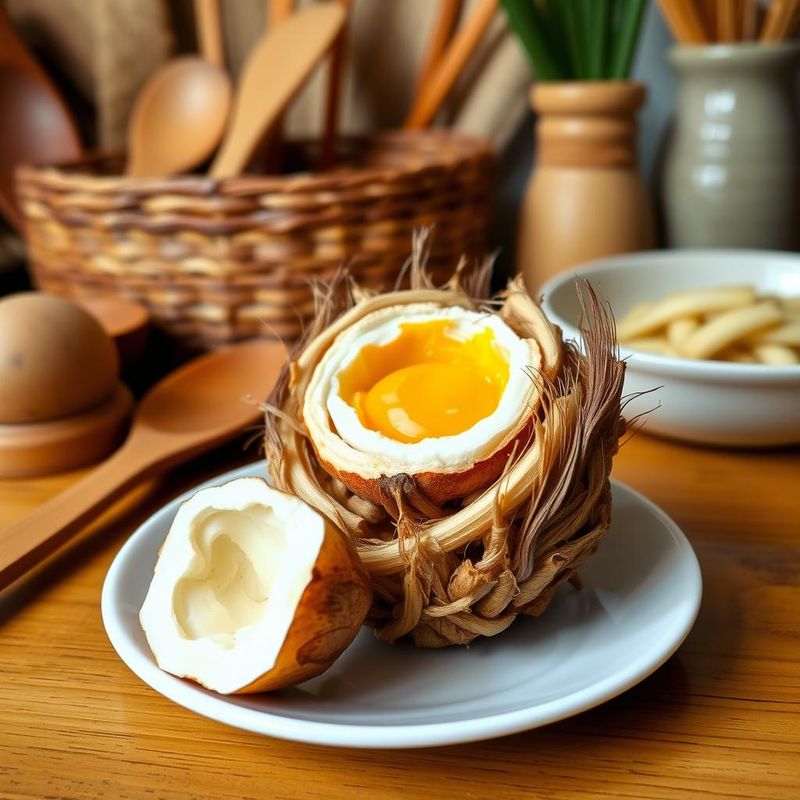
Balut is a delicacy from the Philippines, often described as a daring culinary experience. This dish consists of a fertilized duck egg, incubated for a specific period before being boiled and eaten.
The egg contains a partially developed duck embryo, offering a unique combination of textures and flavors. Traditionally, balut is enjoyed with a pinch of salt or a splash of vinegar.
For many, it symbolizes the adventurous spirit of Filipino cuisine, providing a thrilling taste of local culture. It’s best enjoyed fresh, often sold by street vendors, and is a must-try for the daring food enthusiast.
2. Hákarl
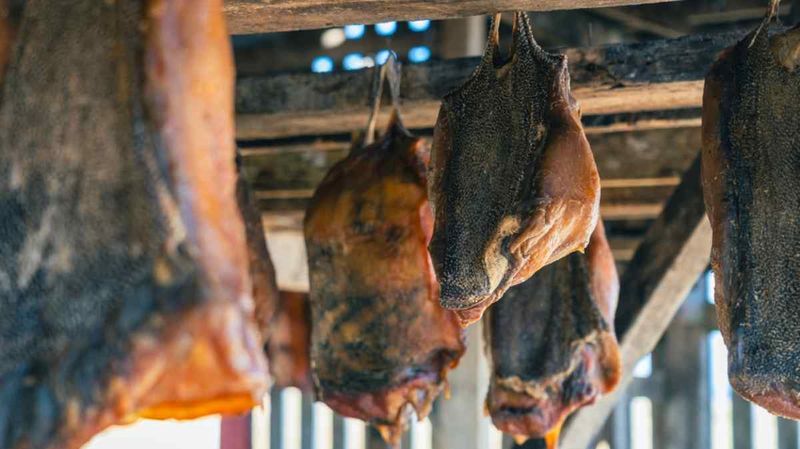
Hákarl is a traditional Icelandic dish made from fermented Greenland shark. This dish is known for its strong ammonia-like smell and acquired taste.
The preparation involves burying the shark meat and allowing it to ferment before being hung to dry for several months.
Despite its pungency, hákarl is a point of pride for Icelanders, often served in cubes as part of celebratory feasts. Pairing it with a shot of Brennivín (Icelandic schnapps) is a common practice, helping to cut through the strong flavor. It’s an adventurous dish for those seeking an authentic Icelandic experience.
3. Escamoles
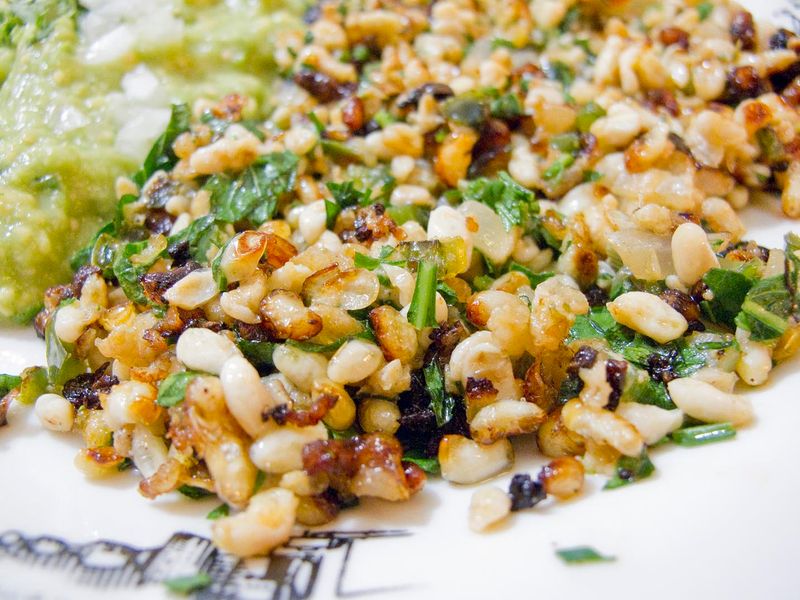
Known as the “insect caviar,” escamoles are ant larvae harvested from the roots of agave plants in Mexico. This dish has a delicate, nutty flavor and is considered a gourmet specialty.
Traditionally, escamoles are prepared with butter and spices, and can be served in tacos or omelets. Their unique texture and taste make them a fascinating dish for adventurous eaters.
Found primarily in central Mexico, these larvae offer a glimpse into the rich tradition of entomophagy. Enjoying escamoles is an opportunity to savor a unique aspect of Mexican culinary heritage.
4. Sannakji
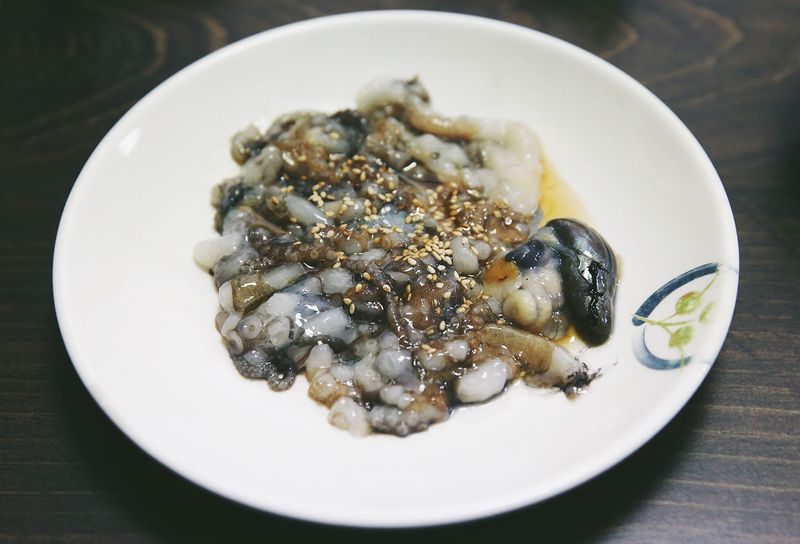
Sannakji is a Korean delicacy featuring live octopus tentacles, known for their freshness and lively texture. The tentacles are seasoned with sesame oil and seeds before consumption.
The dish is a popular choice among thrill-seekers, as the tentacles may still move when served, providing a unique dining experience.
It’s often enjoyed with a side of spicy sauce to complement the subtle flavors of the octopus. For those eager to explore Korean cuisine, sannakji offers a truly unforgettable culinary adventure, where taste and texture play an equally important role.
5. Fugu

Fugu, or pufferfish, is a renowned Japanese delicacy known for its potential danger. The fish contains tetrodotoxin, a potent poison requiring chefs to undergo rigorous training to prepare it safely.
Only licensed chefs can serve fugu, ensuring diners’ safety while offering a unique taste experience. The dish is often prepared as sashimi, with thin slices arranged beautifully on a plate.
The thrill of eating fugu lies in its rarity and the skill involved in its preparation. For those seeking an extraordinary Japanese dining experience, fugu is a must-try.
6. Casu Marzu
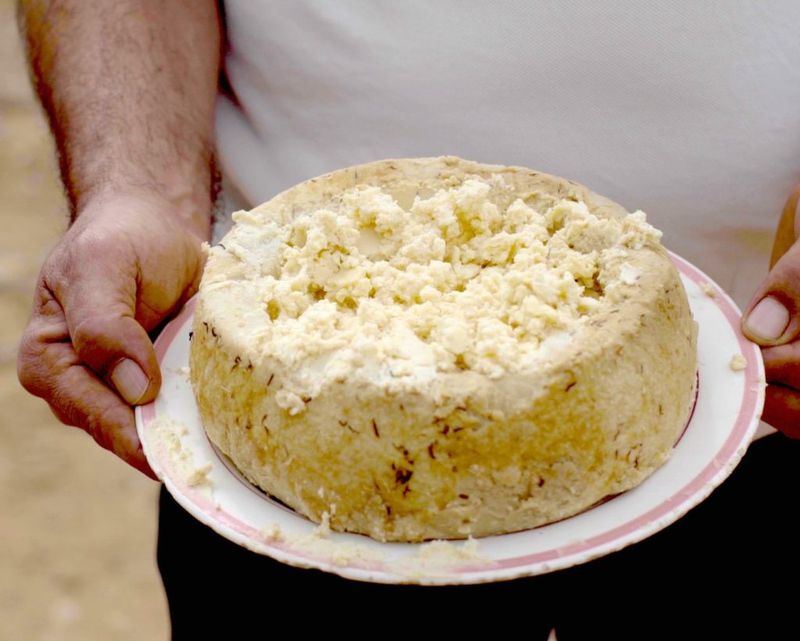
Casu Marzu is a Sardinian cheese known for its unusual ingredient: live insect larvae. This cheese undergoes fermentation with the larvae of cheese flies, enhancing its flavor profile.
The larvae break down the cheese’s fats, producing a creamy, intense taste. Although controversial, Casu Marzu is a celebrated delicacy in Sardinia, embodying the island’s culinary traditions.
It’s typically enjoyed with traditional flatbread and a robust red wine. This cheese offers a daring experience for adventurous cheese lovers, providing insight into Sardinian custom.
7. Kopi Luwak
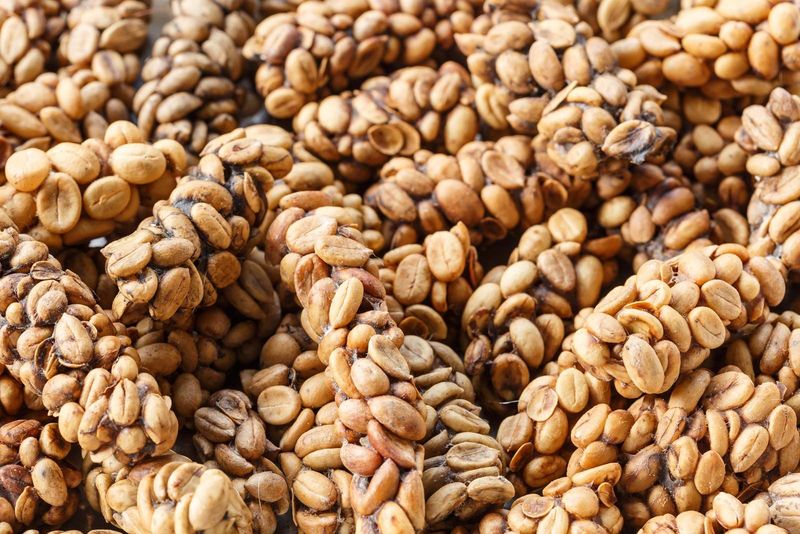
Kopi Luwak is an exotic coffee from Indonesia, made using beans digested by civet cats. The process involves collecting and cleaning the beans after they’ve passed through the animal’s digestive system.
This unique fermentation process imparts a smooth, rich flavor to the coffee, making it a coveted delicacy. Often considered the world’s most expensive coffee, Kopi Luwak is brewed using traditional methods to preserve its distinct taste.
It’s a must-try for coffee aficionados seeking a luxurious and rare coffee experience. Sampling Kopi Luwak provides a taste of Indonesian coffee innovation.
8. Durian Fruit

Durian, often dubbed the “king of fruits,” is both adored and despised for its potent aroma. Found in tropical regions of Southeast Asia, this spiky fruit is an acquired taste.
Its creamy, custard-like flesh offers a complex flavor profile that ranges from sweet to savory, with hints of almond and caramel. Despite its pungent smell, durian is a local delicacy enjoyed in various forms, from fresh slices to ice cream.
If you’re adventurous enough to try it, the key is to hold your breath as you take your first bite and savor the rich, buttery texture that follows.
9. Lutefisk

Lutefisk, a dish from Norway, features dried fish treated with lye before being rehydrated. This preparation method gives lutefisk its gelatinous texture and distinct flavor.
Often served during Christmas, it is accompanied by potatoes, peas, and bacon, creating a festive meal. Despite its unusual preparation, lutefisk is a cherished part of Norwegian holiday traditions.
For those interested in Scandinavia’s culinary heritage, lutefisk offers a taste of tradition and celebration. Its unique texture and preparation make it a memorable dish to try during the holiday season.
10. Fried Tarantula

Fried tarantula is a Cambodian delicacy, offering a crunchy, savory taste experience. These spiders are seasoned and deep-fried, transforming them into a popular street food.
The dish gained popularity during the Khmer Rouge era due to food scarcity, and it remains a unique culinary offering today. Fried tarantulas are often enjoyed with a side of lime and pepper sauce, enhancing their flavor.
For adventurous eaters, this dish provides a glimpse into Cambodia’s resilience and innovation. It’s a must-try for anyone exploring the country’s vibrant street food scene.
11. Century Egg

Century egg, or preserved egg, is a Chinese delicacy known for its distinct appearance and flavor. The eggs are preserved in a mixture of clay, ash, and salt for several weeks or months.
This process transforms the egg yolk into a creamy, dark green color, while the white becomes translucent. Century eggs are often served with pickled ginger or used in congee.
Their unique taste and texture make them a staple in Chinese cuisine, offering a taste of tradition and innovation. For those interested in exploring Chinese culinary arts, century eggs are a fascinating dish.
12. Kangaroo Steak

Kangaroo steak is a lean, flavorful meat popular in Australia. It is praised for its high protein content and low fat, making it a healthy option for meat lovers.
The steak is often prepared with native herbs and spices, highlighting its unique taste. Grilled or pan-seared, kangaroo steak offers a tender, succulent dining experience.
For those exploring Australian cuisine, kangaroo meat provides a taste of the country’s rich wildlife and culinary diversity. It’s a dish that combines tradition with modern culinary techniques, offering a distinctive flavor profile.
Leave a comment